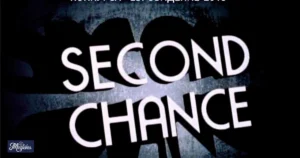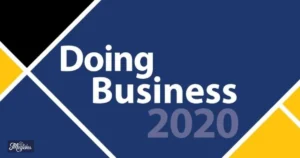“Keep your eyes peeled for what’s coming next!”
We’ve all heard the phrase “stay tuned” at some point, whether it’s from a TV show, a social media post, or even a conversation with a friend. It’s the perfect way to tell someone to keep an eye out for more updates or to await something exciting.
However, if you’re looking to switch things up a bit and avoid overusing the phrase, you might be wondering what other expressions can serve the same purpose. Luckily, there are plenty of alternatives you can use in different contexts to keep your language fresh and engaging.
But why limit yourself to just one phrase? Language is a powerful tool, and varying your expressions can help you sound more interesting, dynamic, and even professional. Whether you’re writing for a blog, sending out a tweet, or simply trying to spice up a conversation, these alternative phrases will serve as great substitutes for “stay tuned” and add flair to your speech or writing. Ready to explore 35 different ways to say “stay tuned”? Let’s dive right in!
This blog will explore 35 creative, engaging, and effective alternatives to the phrase “stay tuned.” These options will help you communicate the idea of keeping someone’s attention on something upcoming, whether it’s a new product launch, an event, or simply a follow-up on something you’ve discussed. Each phrase will be explained with an example, scenario, and a helpful tip on how to use it in different settings.
35 Other Ways to Say “Stay Tuned”
1. Keep an Eye Out
Scenario: John just announced on his social media that he will be launching a new tech gadget soon. He says, “Keep an eye out for my next big release!”
Explanation: This is an informal and friendly way of saying “stay tuned,” especially effective when you want to create anticipation about something coming up. It’s perfect for social media or casual conversations where you want to grab someone’s attention.
Additional Tip: “Keep an eye out” works best in situations where you expect the person to actively look for updates or signals.
2. Watch This Space
Scenario: Sarah, a fashion blogger, teases her followers, “I’ve got something exciting coming up. Watch this space!”
Explanation: This phrase originates from the world of journalism and is commonly used in the UK, but it’s also widely used in social media and other platforms to suggest that there’s something worth waiting for. It’s a slightly formal but still engaging way to tell people that something interesting is about to happen.
Additional Tip: This phrase is great when you want to create a sense of mystery or expectation. Use it when the audience doesn’t yet know exactly what’s coming.
3. Don’t Go Anywhere
Scenario: Dave is hosting a live stream, and just before a big reveal, he says, “Don’t go anywhere, folks – I’ll be back in just a moment with the big news!”
Explanation: This is an engaging and direct way to keep someone’s attention, especially in live settings or when you want to suggest that something exciting is coming right after a brief delay.
Additional Tip: Use this phrase when you want to keep the audience hooked and expect them to stay right where they are.
4. Get Ready

Scenario: Emma sends a text to her team saying, “Get ready! The new product demo is launching in 5 minutes!”
Explanation: This is a phrase that implies something is coming soon, and the listener should prepare for it. It’s a great motivator for building anticipation, especially in marketing or promotional contexts.
Additional Tip: This phrase works well when the person needs to take action or get prepared for an event or release.
5. Hang Tight
Scenario: Michael, a video game developer, tells his followers on Twitter, “Hang tight! The beta version is almost ready for download.”
Explanation: This is a relaxed, informal phrase that tells someone to wait for something that’s coming soon. It’s commonly used in customer service, project updates, or casual conversations.
Additional Tip: Use “hang tight” when you want to reassure someone that what they’re waiting for will be worth it.
6. Hold Tight
Scenario: Anna, a podcast host, teases her audience with, “Hold tight – our guest speaker is about to join us!”
Explanation: Similar to “hang tight,” this phrase suggests that the listener should prepare for something exciting that will happen shortly. It’s a way to ensure that people stay alert and engaged.
Additional Tip: Use this phrase in contexts where the person may be on the verge of experiencing something interesting or surprising.
7. Stay with Us
Scenario: The news anchor, reporting on a developing story, says, “Stay with us, we’ll bring you more details shortly.”
Explanation: This phrase is often used in broadcasting and media contexts to tell viewers or listeners to continue following an ongoing event or story.
Additional Tip: “Stay with us” works well for longer-term engagement, such as during a live event or continuous broadcast.
8. Keep Watching

Scenario: Jason, a YouTube creator, encourages his subscribers, “Keep watching till the end for a special surprise!”
Explanation: This phrase is straightforward and encourages the audience to stay engaged, particularly in videos or events where something exciting will be revealed later.
Additional Tip: This works especially well in video content where people can watch until a big reveal or twist.
9. Stay Close
Scenario: Priya, a fitness trainer, reminds her followers, “Stay close, I’ll be dropping a new workout challenge soon!”
Explanation: This phrase is casual and can create a sense of proximity. It’s useful when you want to create anticipation and keep people interested in what’s coming up next.
Additional Tip: It’s great for social media posts or when you’re keeping people engaged over a longer period.
10. Hold On
Scenario: Mark sends an email to his clients, saying, “Hold on for a moment – we’re about to launch our biggest sale of the year!”
Explanation: A bit more informal and energetic, “hold on” signals that the person should wait for something exciting. It’s a versatile phrase that can work in many different contexts, from business to personal conversations.
Additional Tip: This phrase has an exciting tone, which makes it ideal for time-sensitive announcements or surprises.
Other Ways to Say Thank You for Explaining
11. Keep It Locked
Scenario: Lily, a radio host, tells her listeners, “Keep it locked here for more updates on the weather!”
Explanation: This is a catchy and informal phrase used mainly in broadcasting and media. It’s a fun way of saying, “Stay tuned,” and keeps the listener’s attention focused.
Additional Tip: “Keep it locked” works well for people who have tuned into an ongoing event, such as a radio show or live stream.
12. Stick Around
Scenario: Tom, a director, tells his team, “Stick around, we have some exciting changes to discuss.”
Explanation: “Stick around” suggests that the person should stay put for something interesting or important that’s about to happen. It’s casual but effective in keeping people engaged.
Additional Tip: This phrase is perfect for keeping an audience involved in longer-term events or presentations.
13. Stay Alert
Scenario: Karen, a project manager, reminds her team, “Stay alert, we’ll be sending out a big update in the next hour!”
Explanation: A bit more formal, “stay alert” is used when you want people to remain attentive and prepared for something important. It’s a great choice for work-related announcements or situations requiring focus.
Additional Tip: Use “stay alert” when you want to emphasize the importance of the upcoming update or event.
14. Be on the Lookout
Scenario: Alex tells his followers, “Be on the lookout for an exclusive offer coming your way this weekend!”
Explanation: This phrase adds a sense of excitement and intrigue, making it great for promotional content. It also suggests that the person should actively watch for something coming.
Additional Tip: This phrase works well in marketing and promotions, where you want people to actively keep an eye out for limited-time opportunities.
15. Stay Tuned In
Scenario: Julia, a TV host, says, “Stay tuned in – we’ll be back after the break with more celebrity news!”
Explanation: This is a slight variation of the original phrase and works well for media and entertainment contexts, especially when something is coming up after a short delay.
Additional Tip: “Stay tuned in” is ideal for situations where the audience is following an ongoing event or program.
16. Keep Your Ears Open
Scenario: Sam tells his team, “Keep your ears open – we’ll be announcing something big shortly.”
Explanation: This is a more informal phrase that works well in face-to-face interactions, indicating that someone should stay attentive and expect something important.
Additional Tip: Use this when you want the person to actively listen and pay attention to what comes next.
17. Get Set
Scenario: Nick, a coach, says to his team, “Get set! Our next game is just around the corner!”
Explanation: This phrase works when you want to prepare someone for something exciting or important. It’s often used in athletic contexts but can be used more broadly.
Additional Tip: “Get set” is great when the upcoming event requires some preparation or readiness from the audience.
18. Watch Out
Scenario: Emma, a social media influencer, posts, “Watch out for my next vlog – it’s going to be a good one!”
Explanation: “Watch out” adds a little suspense and is often used in situations where the upcoming event is exciting or even unexpected.
Additional Tip: It’s a good choice for posts or announcements that might surprise or thrill your audience.
19. Get Ready for More
Scenario: Chris tells his viewers, “Get ready for more details about this product launch later today!”
Explanation: This phrase builds anticipation by suggesting that more exciting information or content is coming soon.
Additional Tip: Use it when you want to let your audience know that there’s more to come in the near future.
20. Stay With Me
Scenario: Rachel says to her audience, “Stay with me as we dive deeper into this topic!”
Explanation: This phrase is used when you want to keep someone’s attention while exploring something in more detail. It’s often used in presentations, tutorials, or speeches.
Additional Tip: “Stay with me” is effective when you’re explaining something complex and want the audience to stay focused for the duration.
21. Prepare for the Big Reveal
Scenario: John tells his followers, “Prepare for the big reveal of our new logo at the end of this week!”
Explanation: This phrase is perfect when something major or exciting is about to be shown or announced. It builds suspense and encourages the audience to wait eagerly.
Additional Tip: It works well in marketing and event promotions, where a big announcement or change is anticipated.
22. Get Excited

Scenario: Hannah posts, “Get excited – we’ve got something amazing coming your way very soon!”
Explanation: This phrase directly encourages excitement and anticipation, making it perfect when you want to hype up an upcoming event or product.
Additional Tip: Use it when you want to create energy and enthusiasm around the announcement or event.
23. Hold Your Horses
Scenario: Mark tells his team, “Hold your horses – the announcement is coming up right after lunch!”
Explanation: This playful and informal phrase is often used to tell someone to wait for something but in a fun, lighthearted way. It works when you want to keep the mood relaxed while building anticipation.
Additional Tip: Use “hold your horses” when you want to maintain a casual tone while still keeping the audience engaged.
24. Keep Your Fingers Crossed
Scenario: Lucy tells her followers, “Keep your fingers crossed – the big update is coming soon!”
Explanation: This phrase can add a touch of excitement and optimism to a situation where there’s an element of uncertainty or anticipation.
Additional Tip: It’s great for events that may not be guaranteed but where people are hopeful for a positive outcome.
25. Get Ready to Jump In
Scenario: Chris tells his viewers, “Get ready to jump in with us for an exclusive live session!”
Explanation: This phrase works well when something exciting is about to happen, and you want to invite people to be part of it actively.
Additional Tip: Use “get ready to jump in” when you’re expecting people to participate in something interactive or engaging.
26. Buckle Up
Scenario: Sophie tells her audience, “Buckle up – we’re about to launch something truly groundbreaking!”
Explanation: “Buckle up” is a great phrase when you want to prepare someone for something big and potentially overwhelming. It implies that the upcoming event or announcement will be exciting.
Additional Tip: It’s ideal for announcements that are expected to be thrilling or impactful.
27. Don’t Miss Out
Scenario: Greg sends out a message saying, “Don’t miss out on the latest news – stay tuned for updates!”
Explanation: This phrase is direct and encourages the audience to stay alert so they don’t miss something important. It’s great for promotions or updates.
Additional Tip: Use it when the upcoming content or event is something you want people to make sure they don’t miss.
28. On the Horizon
Scenario: Laura announces, “Big things are on the horizon – stay tuned for more!”
Explanation: This phrase works well when the upcoming event or announcement is close but not quite ready to happen yet. It builds anticipation for something coming soon.
Additional Tip: Use it when you want to hint that something major is just around the corner but not yet fully revealed.
29. Get Set for Action
Scenario: James sends a message saying, “Get set for action – the big event is starting shortly!”
Explanation: This phrase is energetic and action-oriented. It’s perfect when you want people to be ready for something exciting that’s about to unfold.
Additional Tip: It’s best used when the upcoming event requires preparation or when you want to energize your audience.
30. The Wait is Almost Over
Scenario: Kimberly tells her followers, “The wait is almost over – get ready for the big launch!”
Explanation: This phrase helps to create a sense of urgency and excitement, telling people that something exciting is nearly ready to be revealed.
Additional Tip: Use it when you’re close to revealing something but need to build anticipation in the final moments.
31. Things Are Heating Up
Scenario: David shares, “Things are heating up – stay tuned for some exciting news!”
Explanation: This phrase works well when the event or announcement is starting to gain momentum or excitement.
Additional Tip: It’s a great phrase to use when you’re in the build-up phase of a product or event launch.
32. Don’t Blink
Scenario: Jennifer tells her team, “Don’t blink – the new update will be live any minute now!”
Explanation: This phrase suggests that something important is about to happen, and people should stay alert so they don’t miss it.
Additional Tip: Use it in situations where timing is crucial or when you want to emphasize the quick pace of the upcoming announcement.
33. Something Big Is Coming
Scenario: Lucas announces, “Something big is coming – don’t go anywhere!”
Explanation: This phrase implies that the upcoming event or news is significant, and the audience should remain alert and excited.
Additional Tip: It’s ideal for teasing major reveals or announcements that will generate a lot of buzz.
34. Stay Close for More
Scenario: Natalie says to her followers, “Stay close for more updates on the latest trends in fashion!”
Explanation: This phrase tells the audience to stick around for more information and suggests that there’s always something new coming.
Additional Tip: It’s particularly effective when you want to encourage ongoing engagement and interest.
35. The Countdown Begins
Scenario: Alan says, “The countdown begins now! Stay tuned for our grand opening!”
Explanation: This phrase is ideal when you’re launching an event or product with a fixed start time. It emphasizes that the waiting period has begun.
Additional Tip: Use this phrase when you have a specific time in mind for your big reveal or event.
Pros and Cons of Using Different Phrases
Pros:
- Variety: Using different expressions keeps your language fresh and engaging.
- Contextual Fit: Some alternatives are more suitable for casual settings, while others work better in formal environments.
- Increased Engagement: Creative phrases can build anticipation and excitement among your audience.
Cons:
- Overuse: Overusing certain phrases might reduce their impact.
- Misinterpretation: Some expressions might confuse people if they are not familiar with the phrase.
- Tone Mismatch: Certain phrases may not suit the tone of your communication (e.g., using “hang tight” in a professional setting).
Conclusion
Switching up your language can be an excellent way to keep your audience interested and excited for what’s coming next. Whether you choose a casual “hang tight” or a more formal “watch this space,” the key is to use these phrases effectively based on the context and audience.
Remember, using a variety of expressions will not only make your language more dynamic, but it will also help you better capture the attention of your audience, keeping them eagerly awaiting what’s to come.

Hi, I’m Lauren Reynolds: I bring creativity to English lessons, mixing fun with learning. My goal is to inspire students to explore and enjoy the language.










